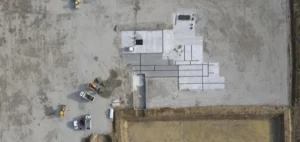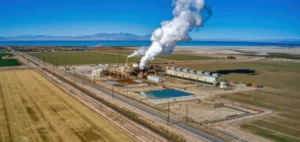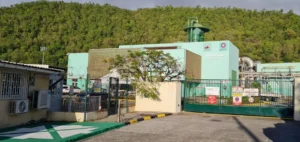In the Paris region, deep geothermal energy is gradually establishing itself as a major energy solution, particularly in densely populated urban areas.
Since the first installations in the 1980s, it has offered a credible alternative to traditional sources of heating, such as natural gas or fuel oil, which are still widely used in heating networks.
The principle is simple: harness the heat of deep aquifers, located some 1,500 meters underground, to supply public and private infrastructures with heat.
In the region, this process heats several thousand homes and public buildings thanks to a geothermal doublet, a system comprising two wells, one for extracting hot water and the other for reinjecting it after use.
These installations, while technically reliable, have the advantage of not being subject to fluctuations in international energy markets, unlike fossil fuels.
Stabilizing costs and energy independence
One of the main advantages of geothermal energy in the Paris region is the cost stability it offers.
While gas and oil prices have seen unpredictable rises in recent years, due in particular to geopolitical tensions such as the war in Ukraine in 2022, geothermal projects make it possible to maintain stable energy prices over several decades.
This is a major advantage for local authorities and large housing estates looking to secure their energy costs over the long term.
By ensuring a constant, predictable supply, geothermal heating networks respond to a crucial issue: how to protect consumers from variations in fossil fuel prices, while at the same time committing to a decarbonization process.
The example of the Chesnay-Roquencourt project, to be launched in 2022, illustrates this approach.
It will heat almost 9,000 housing equivalents from 2026, with an estimated reduction of 18,500 tonnes of CO2 equivalent per year.
Although this reduction is significant, it is above all a pragmatic solution for local authorities wishing to limit the financial impact of energy.
Energy performance and profitability
Geothermal energy in the Paris region also offers particularly high energy efficiency.
According to the Syndicat des Énergies Renouvelables (SER), for every kilowatt-hour (kWh) of electricity consumed by the geothermal system, up to 20 kWh of thermal energy can be produced.
This efficiency, far superior to that of traditional boilers, makes geothermal systems not only more economical in the long term, but also less vulnerable to increases in electricity prices.
The small amount of land required to install geothermal wells in urban areas also makes this technology even more attractive.
Boreholes, although deep, require little surface space, making them easy to integrate into densely populated areas, without disrupting the urban environment or local activities.
This aspect is crucial in a region like Ile-de-France, where real estate pressure is high and the need for heat is high.
A proven, adaptable solution
Geothermal energy is not a new technology in the Paris basin.
Since the first boreholes were drilled in the 1980s, it has established itself as a reliable source of renewable energy for heating networks.
By 2022, more than 55 deep geothermal installations will be producing around 1,700 GWh per year, equivalent to the energy consumption of 200,000 homes.
This potential, largely under-exploited to date, could play an even greater role in the years to come.
The support of public bodies such as the French Agency for Ecological Transition (Ademe) has boosted the sector by facilitating investment in these infrastructures.
Local authorities and condominium associations, such as the Parly 2 condominium association for the Chesnay-Roquencourt project, see this as a long-term solution for controlling their energy costs, while contributing to national objectives for reducing greenhouse gas emissions.
Development prospects in France
On a national scale, geothermal energy could play an increasingly important role in France’s energy strategy.
With projects such as Le Chesnay-Roquencourt, the country has the technical know-how and geological potential to exploit further.
In the Paris region, similar initiatives are likely to be launched in the next few years, particularly to meet the growing demand for energy from new buildings and to offset dependence on fossil fuels.
The development of new boreholes and the extension of heating networks will strengthen the energy independence of cities and stabilize costs for consumers over the long term.






















